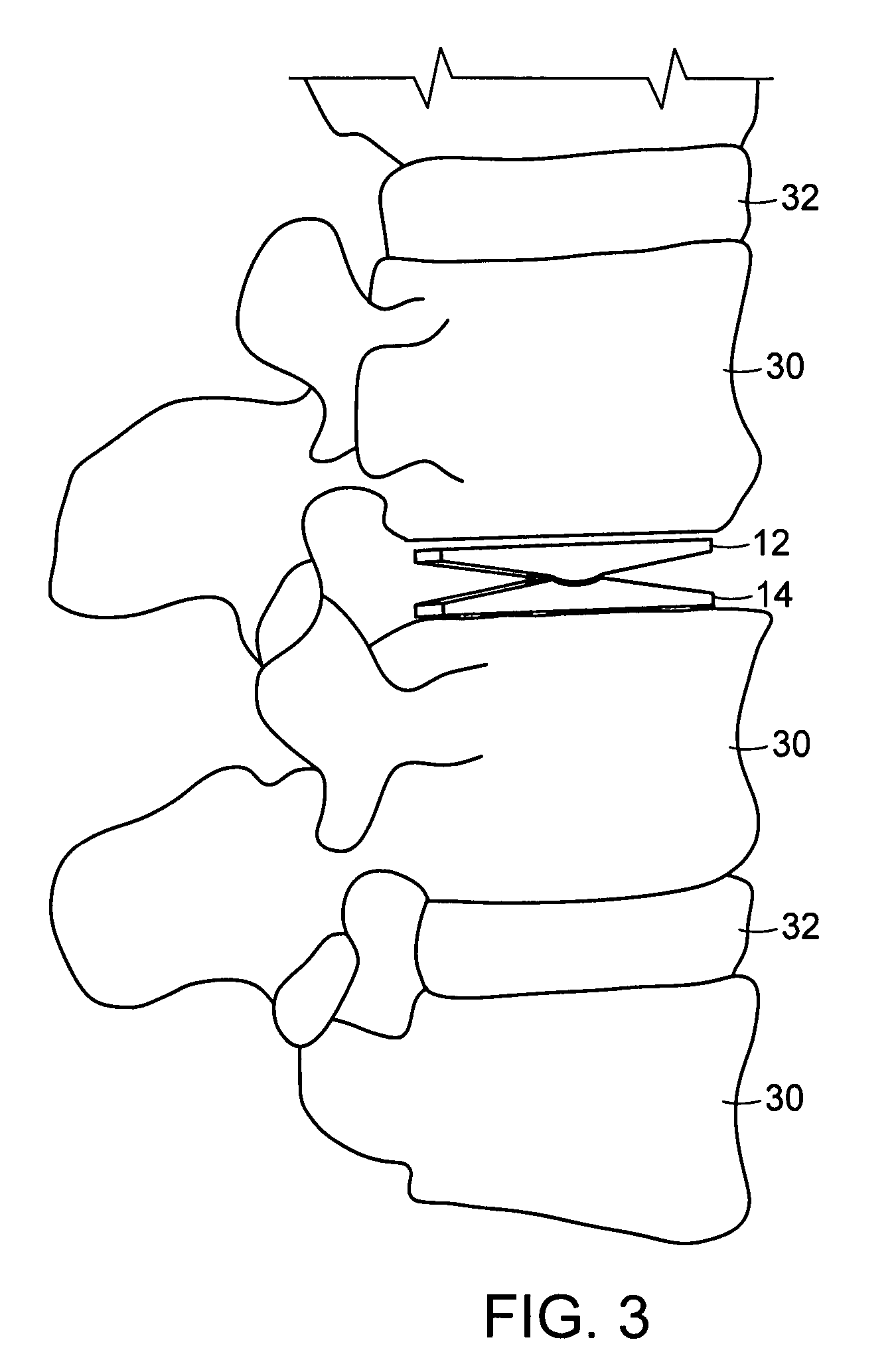Minimally invasive spinal disc stabilizer and insertion tool
a stabilizer and minimally invasive technology, applied in the field of spinal implants, can solve the problems of leg pain, persistent or disabling back pain, loss of muscle control, and displaced or damaged spinal discs,
- Summary
- Abstract
- Description
- Claims
- Application Information
AI Technical Summary
Benefits of technology
Problems solved by technology
Method used
Image
Examples
Embodiment Construction
[0095]The invention provides an apparatus for implantation between two vertebrae of a spinal column to replace or alleviate stress upon an intervertebral disc. The apparatus comprises at least one upper assembly and one lower assembly that can articulate about a mechanical connection between the upper and lower assemblies, thus allowing for controlled relative motion of the at least two assemblies. As a result, when placed between and attached to or resting against two vertebrae, the implant permits controlled motion between vertebral segments of the axial skeleton, similar to that provided by the intervertebral disc being replaced or supported.
[0096]The invention also provides a method and apparatus for implanting the apparatus within the intervertebral space. The method employs a minimally invasive or open lateral, anterior-lateral, or posterior-lateral approach that minimizes soft tissue damage around the implant. The apparatus for inserting the implant may be used both to insert...
PUM
| Property | Measurement | Unit |
|---|---|---|
| height | aaaaa | aaaaa |
| height | aaaaa | aaaaa |
| angle | aaaaa | aaaaa |
Abstract
Description
Claims
Application Information
 Login to View More
Login to View More - R&D
- Intellectual Property
- Life Sciences
- Materials
- Tech Scout
- Unparalleled Data Quality
- Higher Quality Content
- 60% Fewer Hallucinations
Browse by: Latest US Patents, China's latest patents, Technical Efficacy Thesaurus, Application Domain, Technology Topic, Popular Technical Reports.
© 2025 PatSnap. All rights reserved.Legal|Privacy policy|Modern Slavery Act Transparency Statement|Sitemap|About US| Contact US: help@patsnap.com



